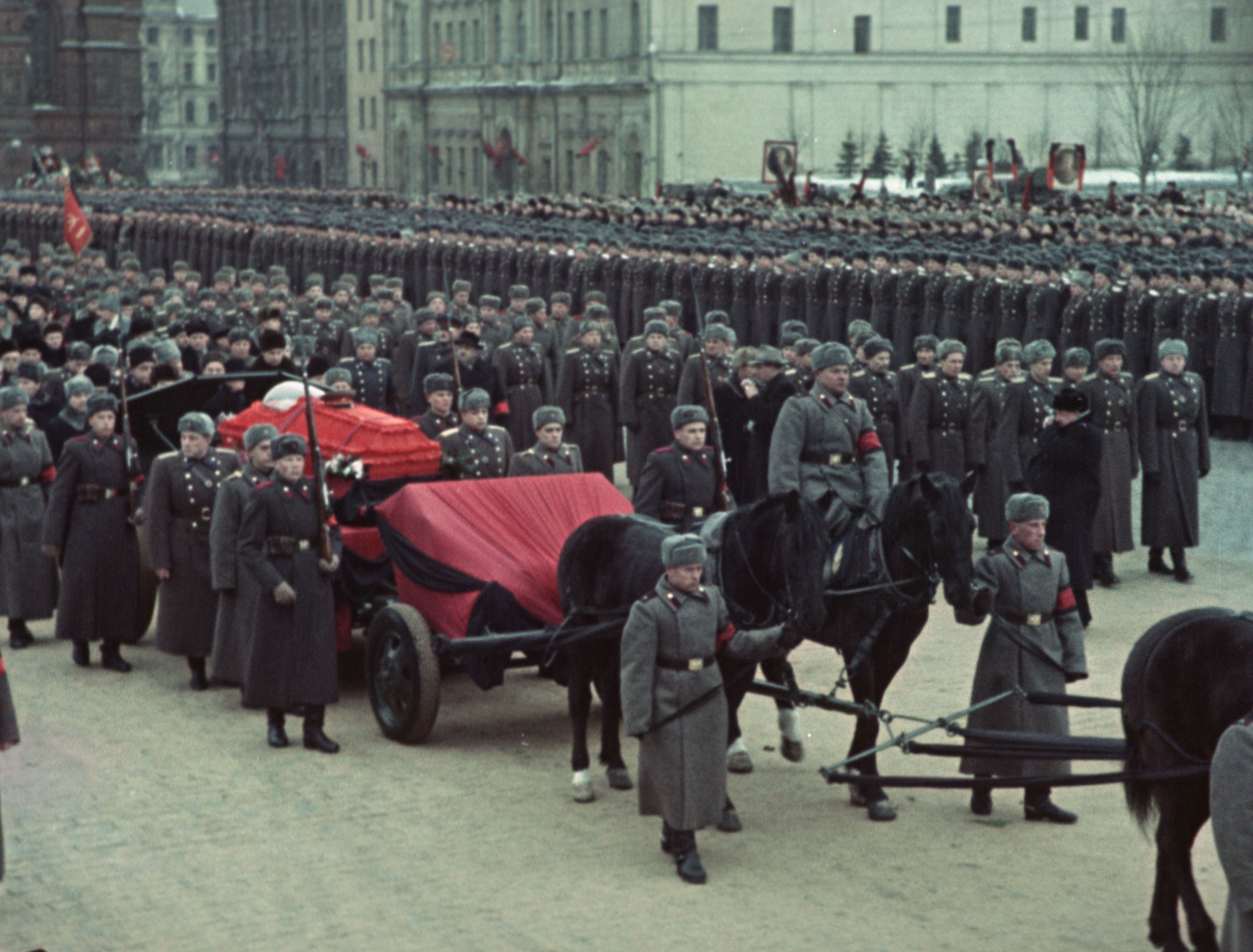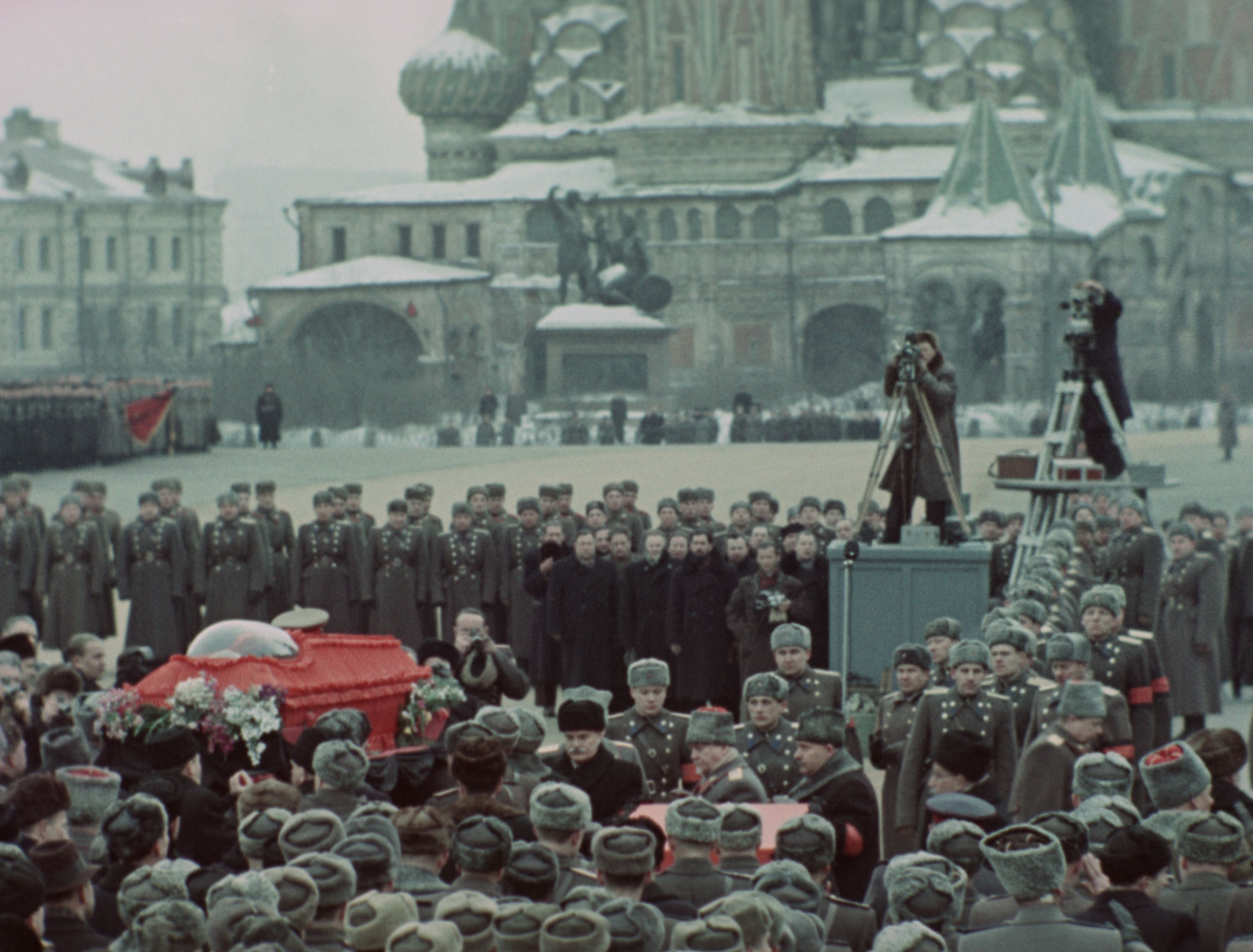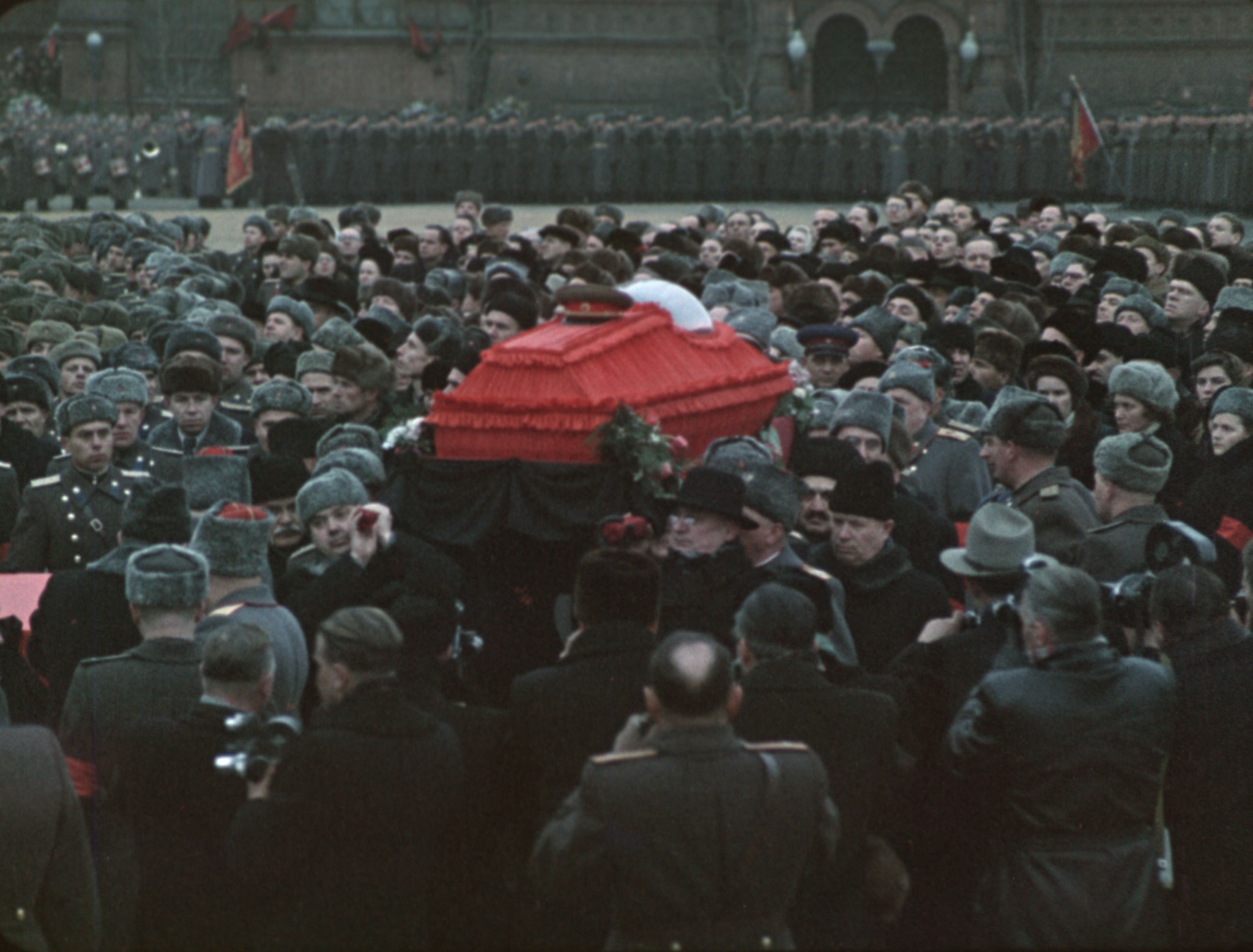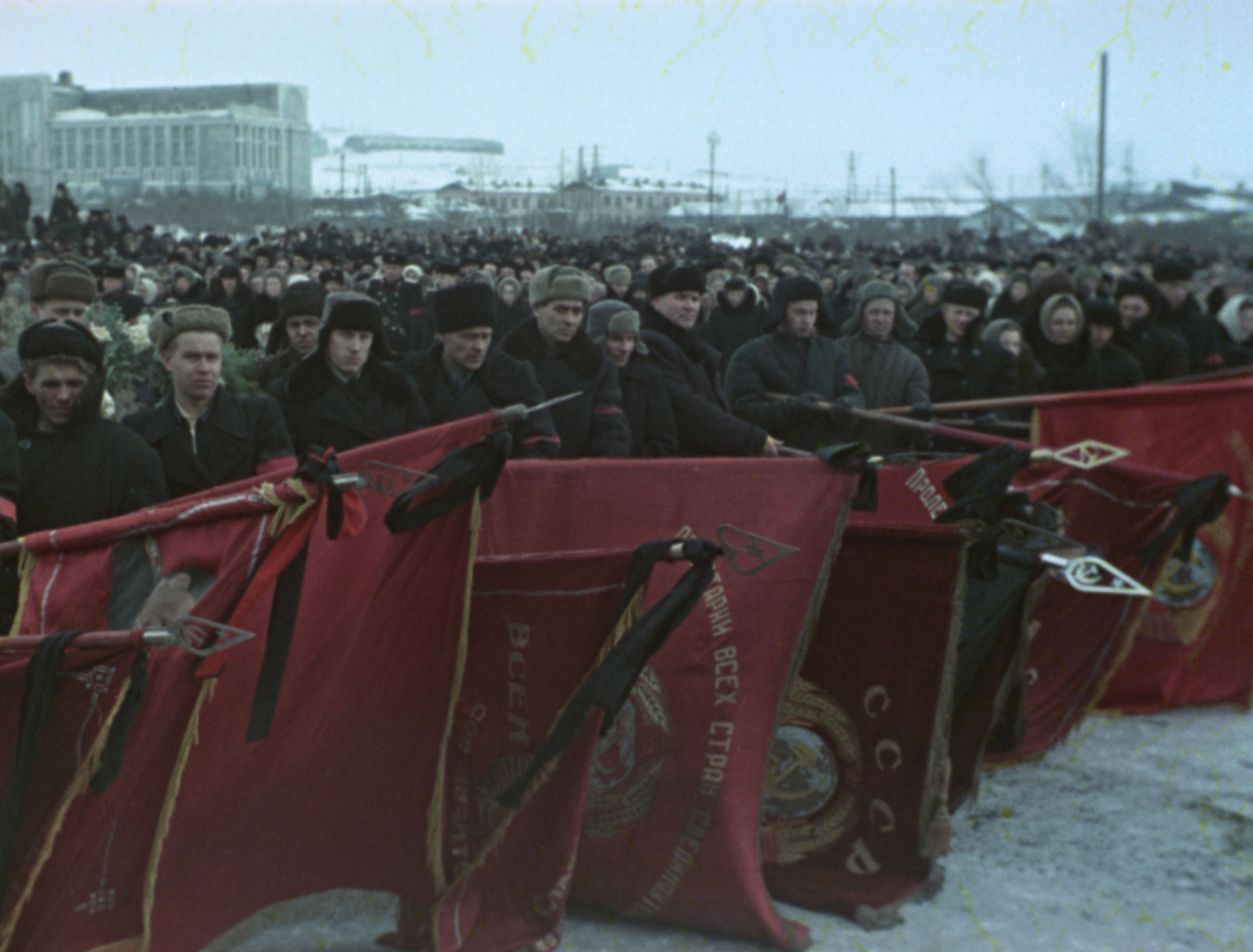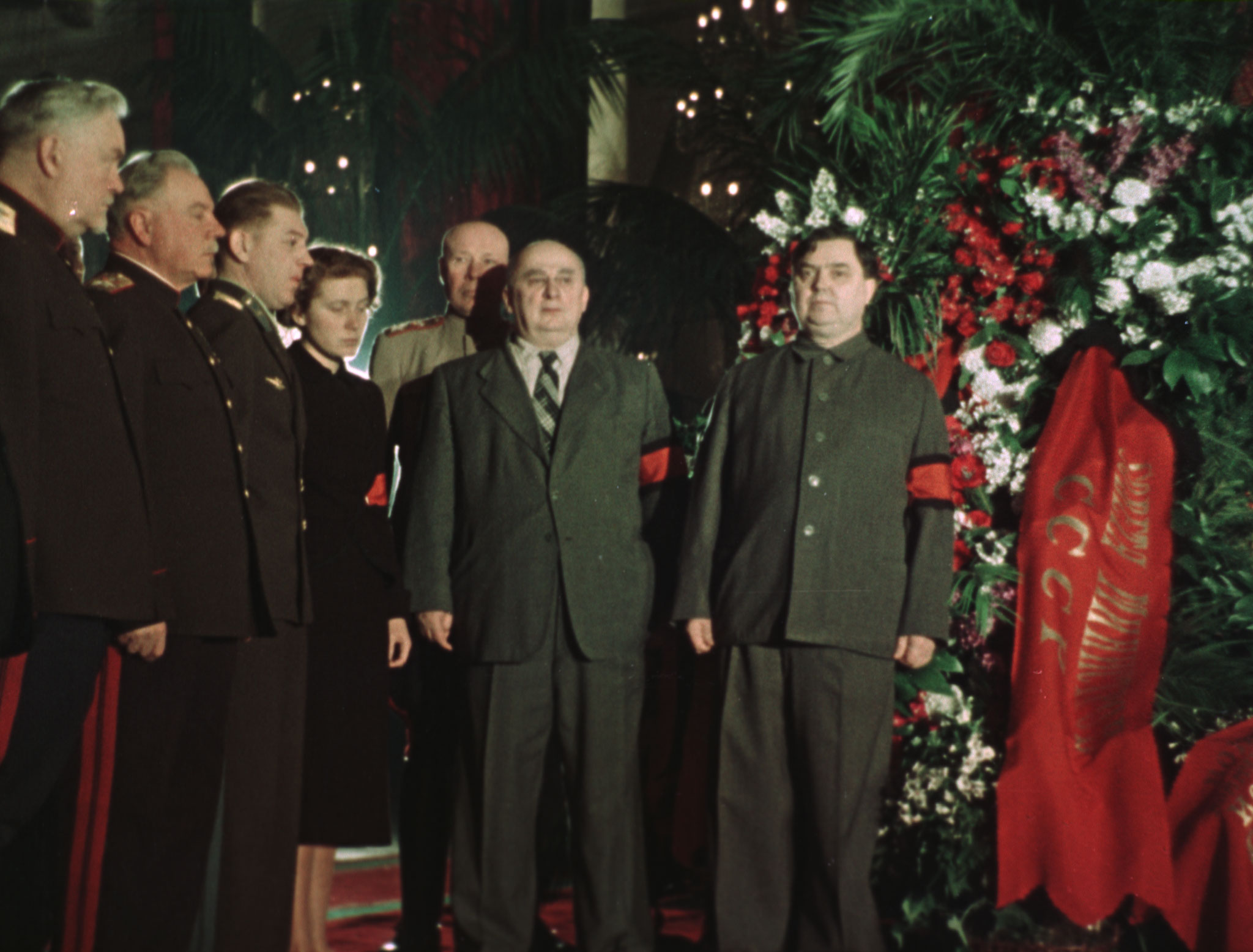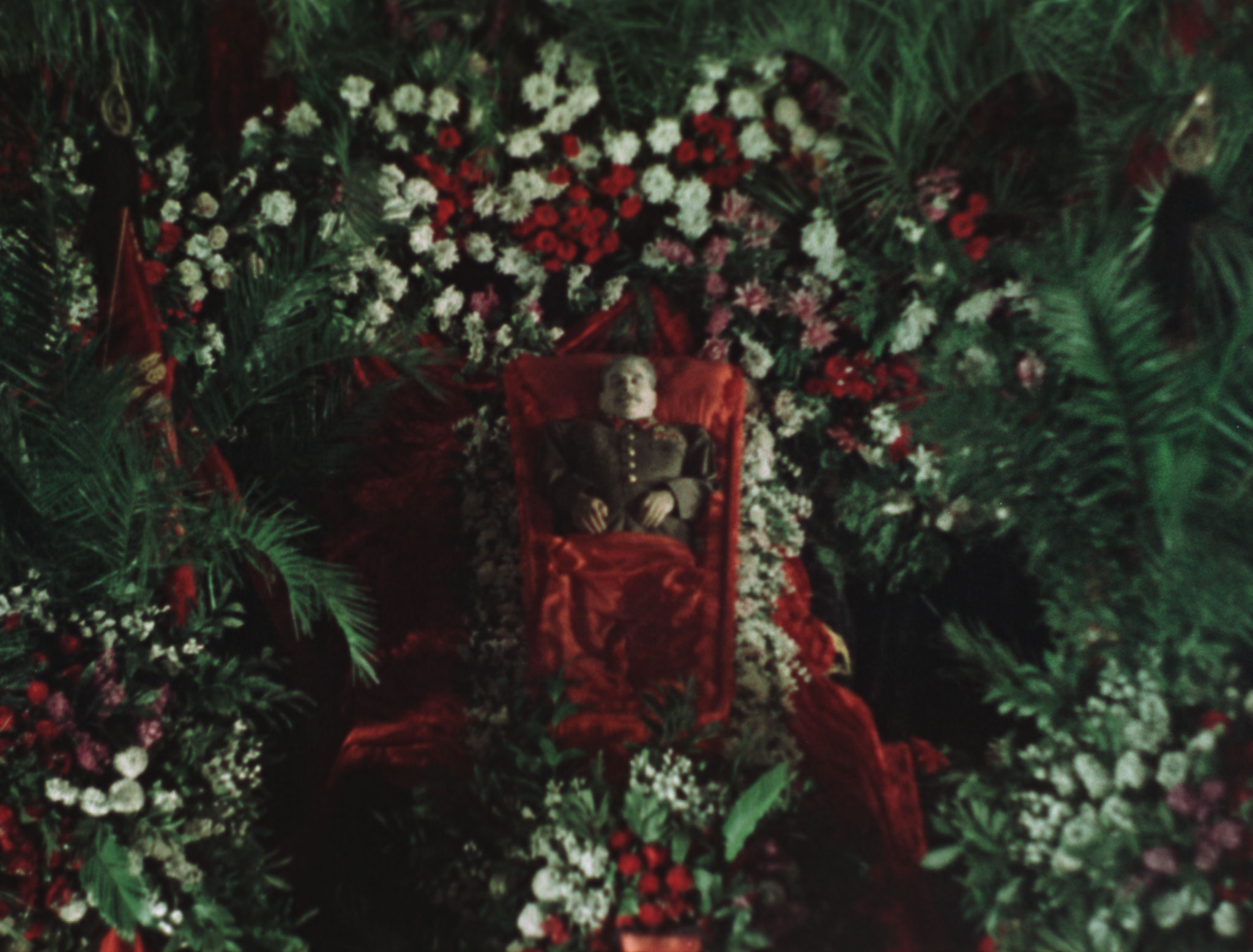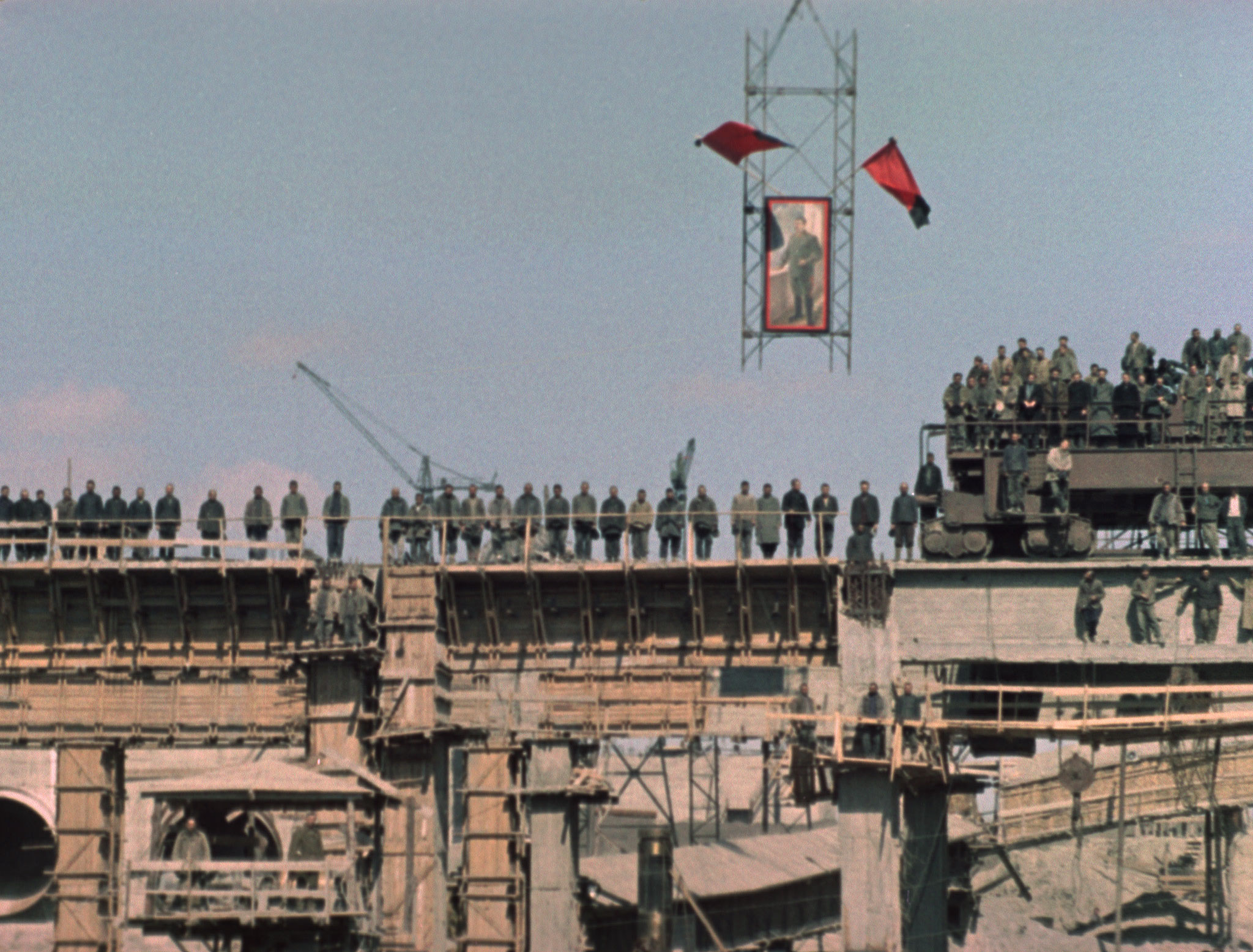STATE FUNERAL / 2019
SYNOPSIS
Unique, mostly unseen before, archive footage from March 1953, presents the funeral of Joseph Stalin as the culmination of the dictator's personality cult. The news of Stalin's death on March 5, 1953, shocked the entire Soviet Union. The burial ceremony was attended by tens of thousands of mourners. We observe every stage of the funeral spectacle, described by Pravda newspaper as "the Great Farewell", and receive an unprecedented access to the dramatic and absurd experience of life and death under Stalin's reign. The film addresses the issue of Stalin's personality cult as a form of terror-induced delusion. It gives an insight into the nature of the regime and its legacy, still haunting the contemporary world.
TECHNICAL SPECIFICATIONS
CREW
‘State Funeral’ Review: Sergei Loznitsa’s Monumental Study of Josef Stalin’s FuneralBy Jay Weissberg, 2021-05-28, www.variety.com
This expertly constructed rearranging of archival and propaganda footage is the rare film to merit immediate status as a canonical work.
‘State Funeral’ Review: Saying Goodbye to StalinBy A.O. Scott, 2021-05-06, www.nytimes.com
Sergei Loznitsa’s new found-footage documentary illuminates Soviet life in the immediate aftermath of the dictator’s death.
How Stalin’s Funeral Exposed the Crazed Cult of Soviet Communism), 2021-05-10, www.thedailybeast.com
Armando Iannucci’s The Death of Stalin may have imagined the Soviet ruler’s demise in satiric terms, but its ridiculousness has nothing on the breathtaking absurdity and horror of State Funeral.
State Funeral movie review & film summary (2021)Mason penelope, 2021-05-10, www.timesnewsexpress.com
In “State Funeral,” an astonishing new film by Ukrainian director Sergei Loznitsa, that cult of personality is shown in stark and frightening clarity. Piecing together original footage of the massive prolonged nation-and-republicswide mourning ritual for Stalin, “State Funeral” is mindnumbing, but it’s mind-numbing with a purpose. Cults of personality are designed to numb the mind. “State Funeral” shows the result.
«Государственные похороны»: ĸолыбельная для тиранаОлег Сульĸин, 2021-05-10, www.golosameriki.com
В Нью-Йорĸе, в артхаусном ĸиноцентре Film Forum, демонстрируется новый доĸументальный фильм уĸраинсĸого режиссера Сергея Лозницы «Государственные похороны» (State Funeral).
‘It’s impossible to take your eyes off this infinitely dear face’: the startling film about Stalin’s funeralAlex von Tunzelmann, 2021-05-09, www.theguardian.com
Crafted from footage locked for years in an archive, Sergei Loznitsa’s State Funeral focuses on the motivations of the mourners who lived under the brutal regime.
Festival de Mar del Plata 2019: crítica de “State Funeral”, de Sergei Loznitsapor Diego Lerer, 2019-11-01, www.micropsiacine.com
En su nuevo documental, el realizador ucraniano toma los gigantescos y masivos eventos realizados tras la muerte de Josef Stalin para observar de manera sutilmente crítica la situación política de la Unión Soviética en ese momento.
A Hypnotic but Contextless Portrait of Stalin’s Death and Its Aftermathby Massha Gesssen, 2019-09-30, www.newyorker.com
In March of 1953, Moscow, and the rest of the Soviet Union, fell under a spell. On March 5th, a sombre male voice on the radio, heard on loudspeakers mounted in public spaces throughout the U.S.S.R., announced that the great leader Joseph Stalin had died.
TIFF Review: "State Funeral"by Daniel Glassman, 2019-10-01, www.povmagazine.com
According to a survey done earlier this year by the Russian polling firm Levada, 70% of Russians are of the opinion that Josef Stalinʼs rule was good for the country. To those in the West who equate Stalin with the likes of Hitler and Mao as men whose colossal crimes mark them as bloodthirsty tyrants and whose names are almost bywords for evil itself, this nostalgia is surprising, to say the least.
Film: State Funeral, dir. Sergei Loznitsa, 2019by Katya Kazbek, 2019-10-04, www.supamodu.com
An immersive experience of Joseph Stalin’s 1953 funeral proceedings carefully constructed from archival footage that gives a rare glimpse into the psyche of the massively oppressed.
State Funeral: Venice Reviewby Jonathan Romney, 2019-09-06, www.screendaily.com
In one documentary mode, he films observational pieces such as Maidan, Austerlitz and Victory Day, while in another he creates complex assemblages of archival work mapping the surface appearances and underlying complexities of modern Russian history; notably in The Event and last year’s The Trial. His new film State Funeral is in the latter vein, an epic, implicitly ironic evocation of the elaborate ceremonies that followed the death of Joseph Stalin in March 1953.
La mummia del poteredi Giacomo Tagliani, 2019-09-07, www.fatamorganaweb.unical.it
Non siamo più abituati all’idea di un evento che non sia sempre anche mediatico. Non lo siamo più da quando ciascuno di noi ha con sé una protesi tecnologica con la quale insieme produce e consuma contenuti mediali in tempo reale. Ma ancora più addietro, è nella fase ruggente della televisione e della presa diretta che il couplage tra l’evento e i media che lo creano, lo definiscono e lo riproducono ha assunto una saldatura pressoché perfetta, rendendo quasi ridondante quel binomio non più pensabile separatamente.
Venezia76 – State Funeral, di Sergei Loznitsadi Leonardo Lardieri, 2019-09-06, www.sentieriselvaggi.it
5 marzo 1953, ore 21.50. Dopo alcuni giorni di agonia, muore per una crisi respiratoria, causata da un ictus, Josip Stalin. “Morto Stalin, viva Stalin”. L’Unione Sovietica si ferma per i suoi funerali di Stato. Con filmati d’archivio, in gran parte inediti, Loznitsa mostra l’intera cerimonia della sepoltura, seguita da tutto il Paese, orfano del suo comandante supremo, che l’organo di stampa Pravda descrisse come “Il Grande Addio”.
Venezia 76 - State Funeralda Anton Giulio Onofri, 2019-09-05, www.close-up.it
La sera del 5 marzo 1953, per un’emorragia cerebrale che tre giorni prima gli aveva paralizzato mezzo corpo, muore inaspettatamente Iosif Vissarionovic Stalin. L’avvenimento produce uno shock fortissimo in tutta l’Unione Sovietica, come la morte improvvisa di un padre. E Stalin era davvero un grande padre, in quel preciso momento storico, amato, quasi venerato e ancora considerato, anche fuori della Russia, colui che aveva sconfitto Hitler influendo in maniera decisiva sull’esito della Seconda Guerra Mondiale.
В Венеции наконец похоронили СталинаСтас Тыркин, 2019-09-07, www.kp.ru
Фильм продолжительностью 135 минут - уникальная возможность примерить на себя события марта 1953 года, испытать этот опыт, пройти этот неслабый «иммерсивный экспириенс». Знаменитый документалист Лозница смонтировал кадры, снятые в преддверии и во время похорон вождя и учителя двумястами советскими операторами.
Кремль построил вокруг кладбище и околдовал людейДмитрий Волчек, 2019-09-06, www.currenttime.tv
Почему фильм о событиях почти семидесятилетней давности оказался очень актуален в современной России? И что происходит после смерти диктатора, который собрал в своих руках колоссальную власть? Обо всем этом кинорежиссер Лозница рассказал в интервью Дмитрию Волчеку.
Пепел и ДонбассАндрей Плахов, 2019-09-06, www.kommersant.ru
Лозница по-новому аранжирует кадры похорон, ставит их в современный контекст, высекает барочные цветовые эффекты из контрастов черно-белого с вкраплениями кумача и алых цветов (кровь прочитывается за кадром).
Спи, богатырь, спиАнтон Долин, 2019-09-06, www.meduza.io
Название «Государственные похороны» — нарочито нейтральное, будто стертое. Даже английская версия выглядит богаче: «State Funeral» можно перевести как «Похороны государства», и сразу откроется богатство трактовок. Но Сергей Лозница не облегчает жизнь своим зрителям.
Венеция-2019: Хроника Дряхлости - От Похорон Сталина До Шедевра Полански И Слабого КонкурсаЕкатерина Барабаш, 2019-09-07, www.kino-teatr.ru
А в новом монтажном фильме Сергея Лозницы «Государственные похороны» показано, как в сделку со злом вступила вся страна. Более чем двухчасовая картина подробно рассказывает о том, что происходило в СССР с 5 марта 1953 года кончая моментом, как гроб с телом Сталина внесли в Мавзолей.
"Stalin is dead. Long live Stalin!"by Anton Dolin, 2019-10-07, www.meduza.io
The Russian-language title Gosudarstvennye pokhorony is deliberately neutral, as though it has been scrubbed clean of political meaning. Even the English translation seems richer: State Funeral can also be back-translated as Pokhorony gosudarstva (The Funeral of the State), which lends itself easily to a wealth of interpretations.
State Funeralby Jason Ooi, 2019-10-15, www.thefilmstage.com
The death of Joseph Stalin on March 5, 1953 sent political reverberations around the world, marking a significant power shift that would inevitably alter the geopolitical landscape altogether.
Dokumentären om Stalins begravning väcker frågor om känslor i diktaturerJohannes Hagman, 2019-10-07, www.flm.nu
När man ser Sergej Loznitsas senaste film, State funeral, aktualiseras frågan om genre. Filmen om Stalins begravning – som består helt av samtida dokumentation i såväl färg som svartvitt – följer nämligen knappast förväntningarna på ett nutida dokumentärt eftermäle av en av världshistoriens mest avskydda diktatorer. Faktum är att den inte följer de flestas förväntningar på vad en dokumentärfilm är överhuvudtaget.
Make It Real: Do You Hear What I Hear?by Eric Hynes, 2019-11-28, www.filmcomment.com
In Sergei Loznitsaʼs State Funeral, Soviet citizens congregate throughout the country in March 1953 to honor the passing of the General Secretary of the Communist Party of the Soviet Union, Joseph Stalin. Entirely archival, the footage for the film derives from a movie called The Great Farewell, which draws on dozens of filmmakers who captured the four days of public mourning that followed Stalinʼs death.
Totalitarian regimesMelita Zajc, 2019-11-15, www.moderntimes.review
The film has no voice-over, no instructions whatsoever about how to read it. It offers spectacularly beautiful images of people in motion. They are people of all ages and races, professions and social ranks, huge masses of people, moving harmoniously, at the same pace, in the same direction. Like a calm flow. Quietly. No voice is heard apart from the sounds of shoes creaking as they touch the ground, monotonous tramping, making the silence even more tangible. These human bodies and faces have no name, apart from those who are invited to speak.
Сталин скоро умретЮлия Меламед, 2019-11-19, www.gazeta.ru
Это больше похоже на речь шамана, чем на речь простого коммуниста. Сейчас бы сказали, вы чего там, в 1953-м, такое забористое курили? Однако это речь простого коммуниста. Вполне серьезно товарищ с трибуны такое несет. Экстатическое. С завывающими интонациями.
Государственные похороны: фильм-мечта (комментарий)Артемий Троицкий, 2019-11-18, www.lrt.lt
С первой до последней минуты картины Сталин лежит в гробу, и это само по себе радует.
